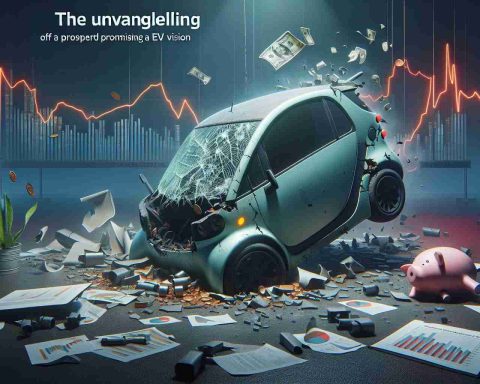The Dawn of a New Era: Flying cars, once a fantastical concept depicted in science fiction, are now edging closer to reality thanks to remarkable advancements in technology. With several companies racing to make personal airborne transport a viable option, the future of commuting may be taking off—literally.
Recent Breakthroughs: Recently, a significant milestone was achieved by Klein Vision, a Slovakia-based company, whose AirCar received its official airworthiness certification. This dual-mode vehicle transformed seamlessly between a sports car and a small aircraft, completing an 80-mile intercity test flight in less than 30 minutes. Such innovations are not isolated; they signify a broader shift in transportation tech, blurring the lines between road and air travel.
Implications for Urban Mobility: The integration of flying cars promises to revolutionize urban infrastructure by alleviating traffic congestion and reducing travel time significantly. Unlike traditional cars, flying vehicles can traverse vertical layers of cityscapes, offering a potential solution for overcrowded city streets.
Challenges Ahead: Despite the excitement, major hurdles remain. Safety, regulatory frameworks, and infrastructure development are critical issues that need comprehensive addressing. Balancing these innovations with environmental concerns is another crucial challenge, requiring sustainable energy solutions for these high-flying vehicles.
Looking Forward: As companies innovate, the dream of flying cars seems increasingly feasible. While commercial use may still be a few years away, these aerial marvels signify the advent of a transformative era in personal transportation, reshaping how we envision travel in the future.
The Sky is the Limit: Exploring the Emerging World of Flying Cars
Emerging Trends in Urban Air Mobility
As flying cars transition from science fiction to reality, new trends are shaping the direction of this innovative mode of transport. Urban air mobility (UAM) represents a dynamic field focused on the development of electric vertical takeoff and landing (eVTOL) vehicles designed for short-distance travel. Companies like Airbus and Uber are exploring the potential of eVTOLs to redefine urban commuting, leveraging advancements in battery technology and lightweight materials.
Innovations and Features
The latest flying cars boast advanced features that enhance safety and performance. Autonomous navigation systems, AI integration for flight path optimization, and real-time communication networks are just a few innovations being developed. Additionally, aerodynamic designs and hybrid propulsion systems are being incorporated to improve efficiency and reduce emissions.
Safety and Regulatory Challenges
Despite the progress, safety remains a paramount concern. Developers are working on redundancy systems and fail-safes to ensure passenger safety in the event of technical failures. Regulatory bodies face the intricate task of creating a legal framework that encompasses air traffic management, pilot certification, and vehicle airworthiness standards.
Sustainability and Environmental Impact
As flying vehicles consume more energy per mile than their terrestrial counterparts, researchers are exploring sustainable energy solutions, such as hydrogen fuel cells and solar-powered flight technologies. The drive toward eco-friendly designs is crucial in minimizing the environmental footprint of this emerging industry.
Market Potential and Use Cases
Market analysis anticipates significant growth in the UAM sector, with promising use cases in emergency services, cargo delivery, and private air travel. Companies envision a future where urban air taxis operate alongside personalized flying cars, making time-efficient travel accessible to a broader audience.
Future Predictions
With continuous advancements, experts predict that flying cars could enter the mainstream market by the 2030s. As infrastructure evolves to support aerial highways and vertiports, and consumer acceptance grows, the flying car could become a staple of urban life, permanently altering the landscape of personal transportation.
In conclusion, the evolution of flying cars is set to revolutionize the way we perceive travel, pushing the boundaries of technology and redefining modern mobility solutions.













